| Amount Per 100 g | |||
| Calories | 412 Kcal (1725 kJ) | ||
| Calories from fat | 378 Kcal | ||
| % Daily Value* | |||
| Total Fat | 42g | 65% | |
|---|---|---|---|
| Total Carbs | 5g | 2% | |
| Protein | 5g | 10% | |
* Percent Daily Values are based on a 2000 calorie diet. Your daily values may be higher or lower depending on your calorie needs.
Find out how many calories should you eat.
Ingredients And Nutrition Overview
Best
choice Good
choice Poor
choice Avoid
it!
choice Good
choice Poor
choice Avoid
it!
-
WeightWatchers Points: 11.7, PointsPlus: 12, SmartPoints: 12
WeightWatchers Points are estimated by carbohydrates, fats, protein and fiber in product. They are not an affirmation of better quality or nutritional value of the product or its manufacturer. Only way to count for dieters. Less points are better.
Read more at Weight watchers diet review -
Very high in saturated fat
Not all fats are created equal. Saturated fats are the ones responsible for bad cholesterol buildup in our blood vessels, as well as contributing to coronary disease.
-
For dieters: FoodPoints value is 4
* FoodPoints are calculated by Fooducate based on fats, carbs, fiber, and protein. They are not an endorsement or approval of the product or its manufacturer. The fewer points - the better.
-
This product is minimally processed
Minimally processed products usually contain a very short ingredient list. For the most part, they are comprised of simple ingredients that you would have found in your great grandmother's kitchen 100 years ago.
-
One of the worst products in its category
This product is in the bottom 10% of the products in its category
-
Watch the cholesterol...
While cholesterol has been shown to be less harmful than once believed, you should not consume more than 300mg a day. This product contains more than 10% of your daily cholesterol intake. If you're on a low cholesterol diet, make sure you pay attention to portion: 10% of your daily allowance can quickly become 50% when a hamburger turns into double cheeseburger. Trouble sticking to daily goals? Try limiting your meat, cheese and dairy intake to one item per meal and avoid items with multiple sources of cholesterol (like chicken with ham and cheese, breakfast sandwiches with sausage and cheese or bacon cheeseburgers). Opt for items like BLT's, chicken sandwiches with veggies and meatless pizza. Choose water and not milk for your main mealtime beverage.
-
Not a good source of calcium!
Cheese is a generally a good source of calcium (more than 10% daily value per serving) - but not the one you just scanned. If you are looking for calcium - swap for something with higher calcium content. By the way, you don't need high fat or calories to get high calcium. Many "lite" versions of cheese provide 30% of daily calcium needs. Choose cheeses that are a naturally good source of calcium. If you're worried about fat and calories, pre-sliced cheese, cheese sticks or cheese squares are a great way to make sure your portion is the right size. The FDA defines a serving of cheese as 1 ounce (30 grams).
-
Cheese lovers rejoice, maybe?
Denmark is known for its tasty dairy products. Unfortunately butter and cheese are very high in saturated fat. The connection between saturated fats and increased blood cholesterol (leading to heart issues) has been accepted by most health organizations world wide. That’s why, when research comes out pointing out the opposite, our ears perk. Especially when the research is by Danish scientists, sponsored by the Danish dairy industry. What did the European scientists discover? That cheese and butter have different effects on our bloods LDL (bad) cholesterol levels. While adding butter to your diet does increase bad cholesterol levels, cheese does not. A group of 50 people were tested over a period of several months, some consuming butter, others cheese. The butter eaters had an increase of 7% in their LDL cholesterol levels. Why would cheese, rich in saturated fat just like butter, have no effect? The researchers hypothesize that it could be the high level of calcium in cheese, as compared to butter. Or maybe the high amount of protein. Or maybe they need to do some more research. In any case, this is one small study, so don’t go triple cheese on your next pizza night. Rather, enjoy high quality cheese in small portions.
-
What is "pasteurized process cheese" ?
It melts nicely, it's cheap and it has a familiar flavor. But what is in pasteurized cheese product? Truth is, we don't know exactly . . . If you remember the ubiquitous "government cheese," well, you're looking at a modern version of this technological "marvel." Originally created during WWII and given to soldiers, welfare recipients, schools and disaster victims, pasteurized process cheese product is here to stay. The reason we don't know what's in it is because pasteurized process cheese could contain cheddar cheese, colby cheese, real cheese trimmings or "rework" process cheese. So is this cheese healthy? Nutritionally, it's OK. Economically it's affordable. Environmentally, it might even be good because it prevents waste by "reworking" cheese and using cheese trimmings. There's only so much saturated fat a person should eat in a day - whether you'd like to use it on this product, is a personal choice.
You Might Also Like
% RDI of Main Nutrition Facts
21%
of RDI* (412 calories) 100 g
-
Cal: 20.6 %
-
Fat: 64.6 %
-
Carb: 1.7 %
-
Prot: 10 %
-
0%25%75%RDI norm*
Calories Breakdown
- Carbs (4.8%)
- Fat (90.4%)
- Protein (4.8%)
Get Your Recipe of Health!
Follow RecipeOfHealth on Facebook!


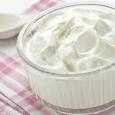
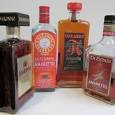
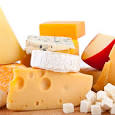

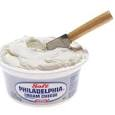
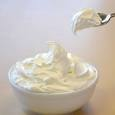
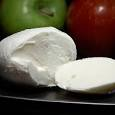
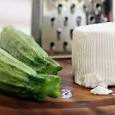
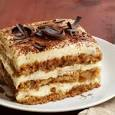
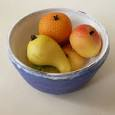
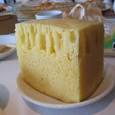
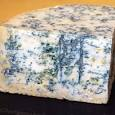
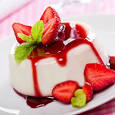

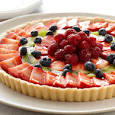











Add your comment